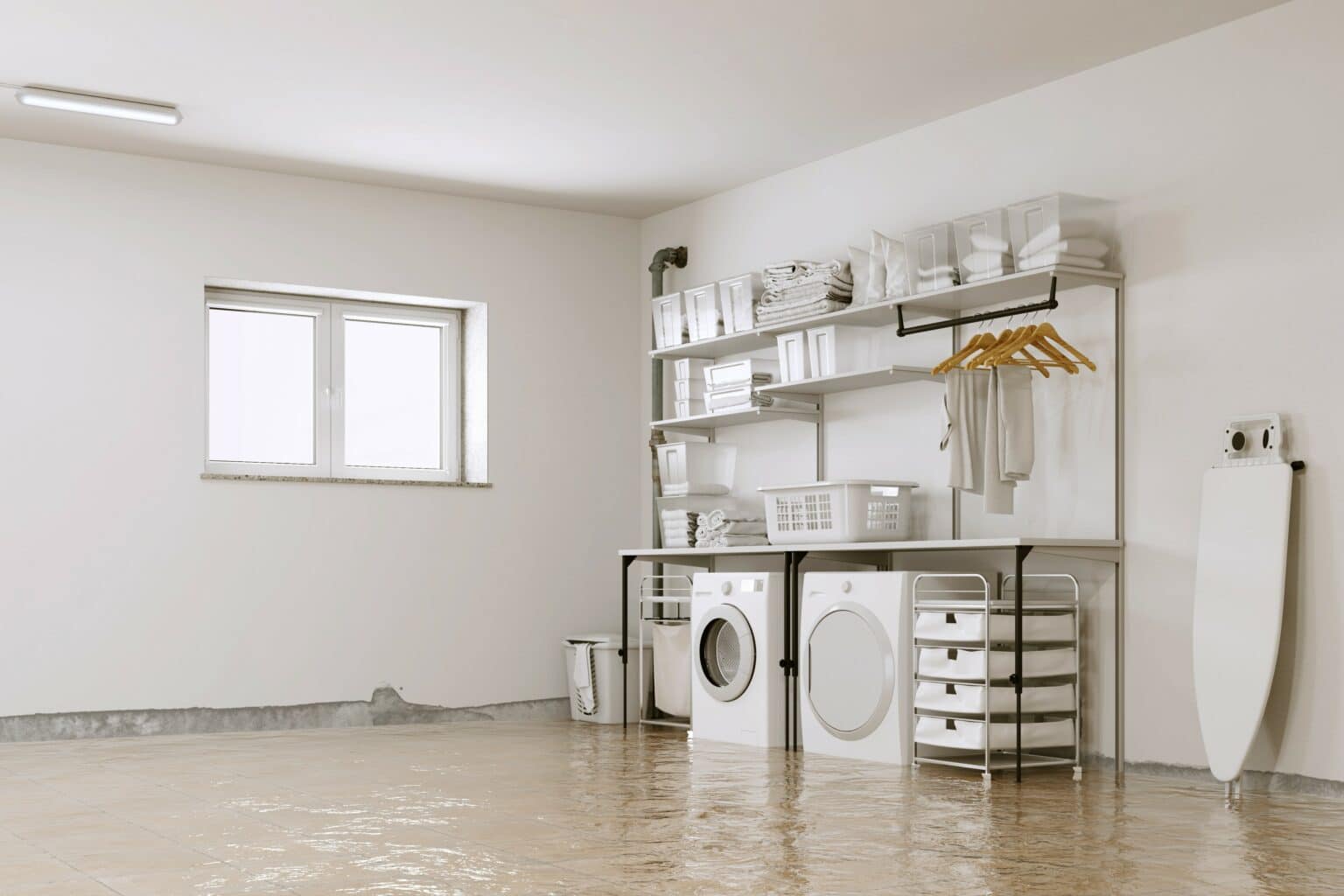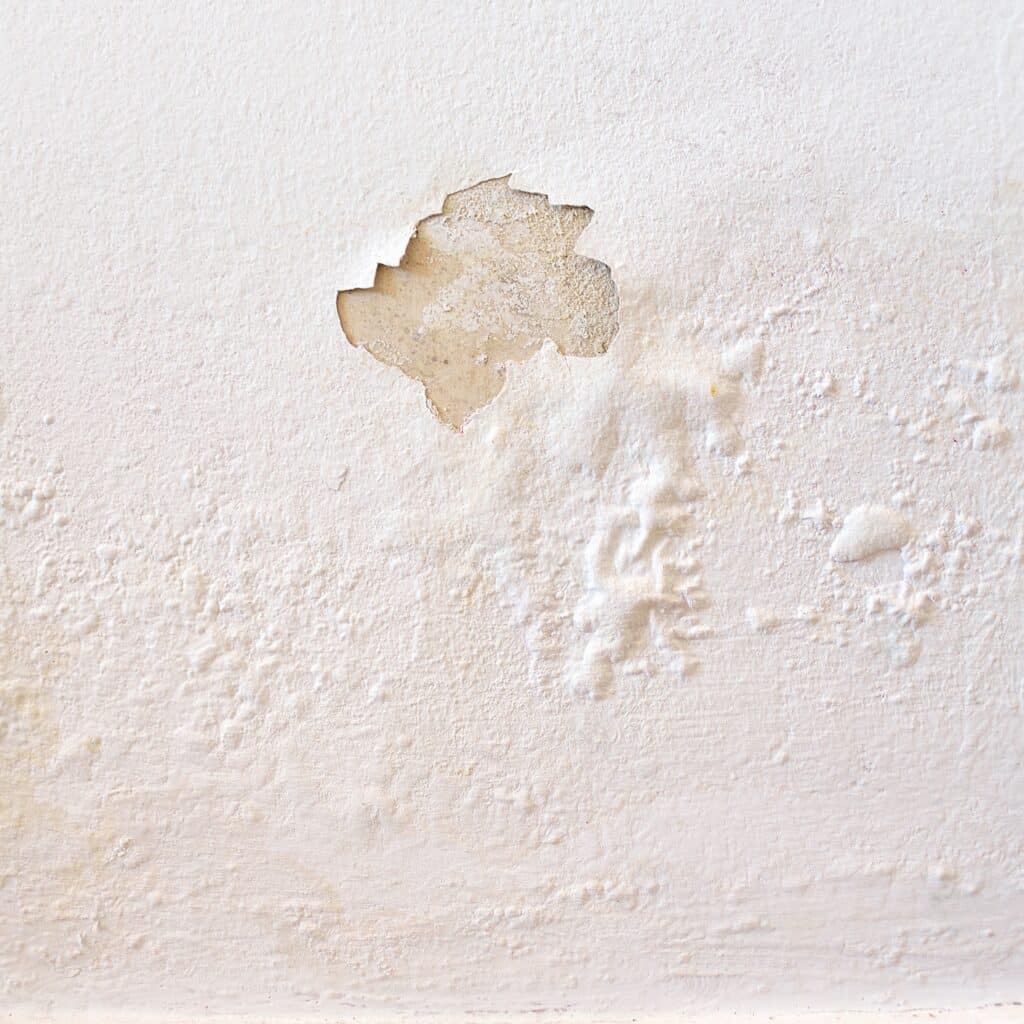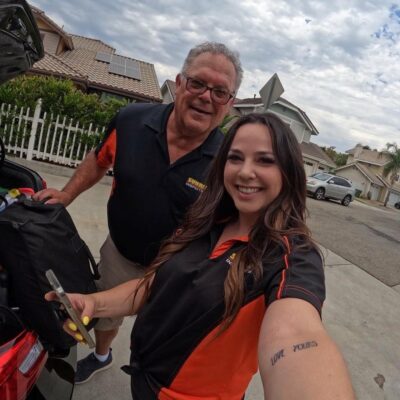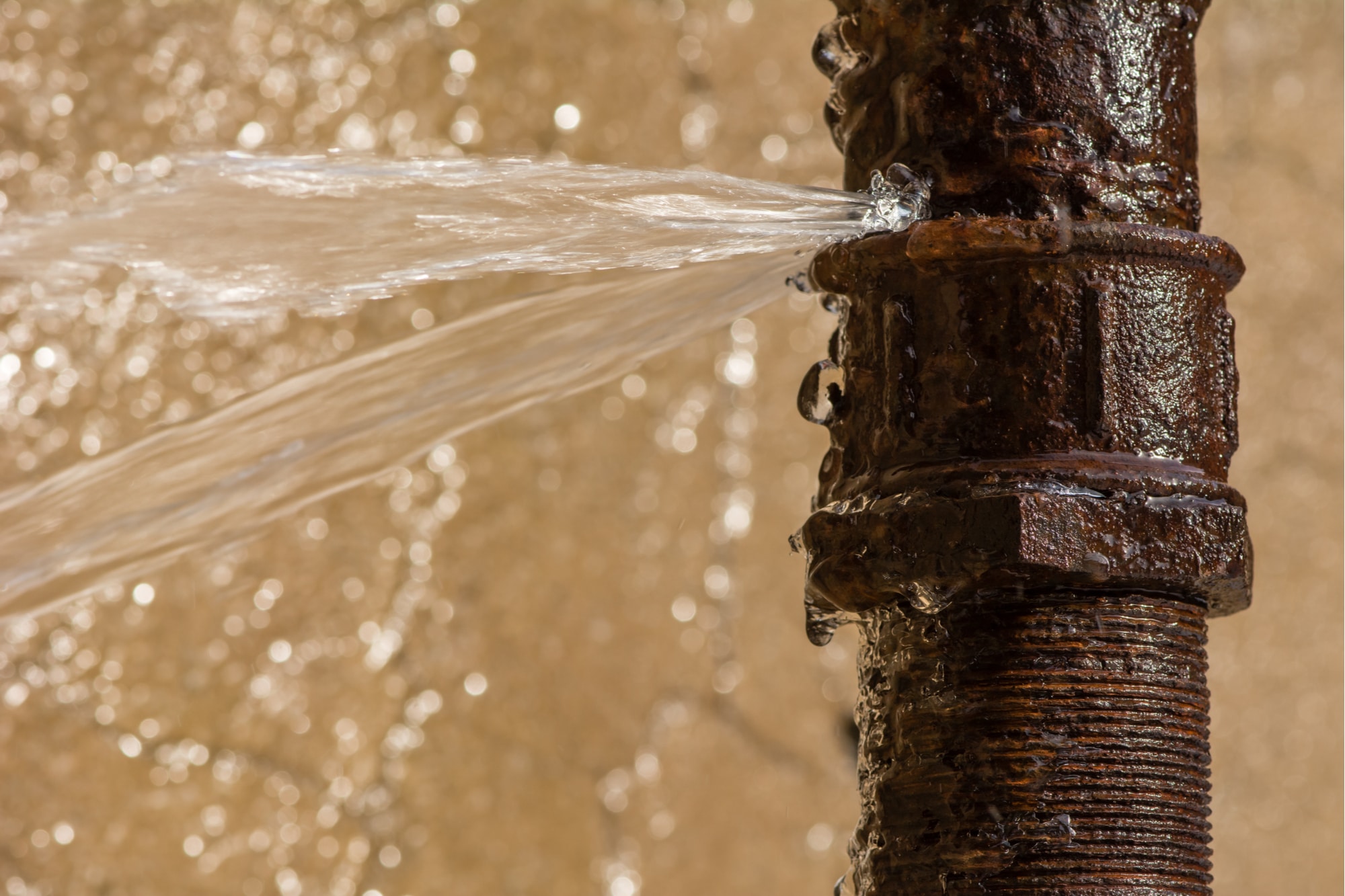It’s Coming from the Walls! A Home Inspection Water Damage Claim
By Alyssa Cink
Last Updated November 9, 2023


The following is a real errors and omissions (E&O) case study from our home inspection insurance archives. To protect the insured’s identity, all identifiable characteristics from this water damage claim—including names, associations, and locations—have been altered or removed.
It started like something out of a movie. An engaged couple moves into their first home a short walk away from the beach. They can drink their morning coffee on the patio, warmed by the blankets on their laps and the conversations they share before work. The breeze, both invigorating and comforting, carries salt, sand, and the ever-present lapping of ocean waves.
It feels like a dream. How could anything go wrong?
Rain turned into a torrential downpour a few days after the couple’s move. This was common for the area, so no one was surprised. What did surprise them, however, was where the rain ended up.
Sure, it wasn’t blood oozing through the walls or pouring out from an elevator. But, as far as real-life horror scenarios go, it wasn’t far off. The rain seeped in through the walls and through a leak in the roof, flooding gallons and gallons of water into the laundry room, a spare bedroom, and the garage. The walls near the baseboards bubbled and revealed visible mold. Finally, in the garage, the couple found a thin layer of spray paint the sellers must have used to conceal black mold.
Sadly, the house’s moisture problems didn’t stop there. With every heavy downpour, the home flooded. Again. And again. Meanwhile, the couple devoted hours of labor and thousands of dollars to fixing the defects and replacing their water-damaged belongings.
The Water Damage Claim
Four months post-inspection, Grace, the groom’s sister-in-law and an attorney, called the home inspector to inform him about the flooding problem. He, in turn, promptly called us to report the incident.
Steve, the inspector, explained that the home was occupied at the time of the inspection. Every room had furniture, throw rugs, and more of the sellers’ personal belongings. If the home experienced ongoing roof leaks in heavy rain, then these items would’ve had visible water damage. But Steve saw no evidence of flooding. In comparing the original report materials and inspection timeline to the claimants’ photos, here’s what our claims team deduced:
- The sellers had placed their belongings to conceal the mold and bubbling paint along the affected walls and corners. It makes sense, then, that the couple would’ve noticed only after the sellers removed their belongings post-sale.
- The garage was packed with personal belongings, too. This prevented Steve from visually inspecting the entire space, which he disclaimed in his report.
- Steve was not paid for a mold inspection, nor could he move the belongings to see the walls behind them.
- Steve had reported prior shingle erosion and repairs. Furthermore, he’d advised that the roof was nearing its anticipated lifespan and recommended follow up from a qualified roof specialist. The couple even admitted to knowing the roof was old before closing.
- Steve never had a chance to discuss the inspection process or findings with the engaged couple. Instead, the couple arrived at the tail end of the inspection, and Grace the sister-in-law-attorney handled all conversations.
Nonetheless, the opposing counsel insisted that Steve ignored “glaringly obvious red flags” about the flooding, mold, and roof that “even a rookie home inspector” would know to report. Their demand: excess of $200,000 for damages, pain, and suffering.
The Discovery

Because hidden or concealed defects come to light months or even years after the inspection, they’re the second most common reason why clients file claims against home inspectors. These claims often arise from intentionally covered or out-of-sight mold or personal belongings limiting visibility and making affected areas inaccessible. Similarly, it’s common for water intrusion and other defects to turn out to be more serious or pervasive than the inspectors or clients originally believed. We share more examples in our concealed defect article.
Based on this knowledge and our initial analysis, this looked like a classic case of ignored recommendations and hidden water damage. But that was before we found one more piece of evidence in this water damage claim.
While reviewing Steve’s home inspection materials, our claims team found a 360-degree photo of a hallway that was not blocked with furniture. To cover their bases, the claims team asked Steve for a digital copy of the picture. He sent it, and upon zooming in, they noticed a section of the hallway baseboard with visible moisture damage like the new owners had described. Unfortunately, this meant Steve had, in small part, failed to report some evidence of water intrusion that was visible at the time of the inspection.
The Resolution
The good news: Steve had a strong limitation of liability clause in his pre-inspection agreement.
This clause offers powerful protection. It can’t make you invincible. But, if you are found liable for a home inspection claim, it will cap your responsibility to a set amount of money. For example, in this water damage claim, Steve’s pre-inspection agreement capped his liability to double the inspection fee—not $200,000, as the clients originally demanded.
Of course, even without a limitation of liability clause, our team would’ve fought tooth and nail to reduce that demand as much as possible. Still, it would’ve taken significantly longer to shut down the claim. This means more time, stress, and possibly fees. Instead, a strong clause limits how much you’ll pay and can even deter claims altogether.
In exchange for double the inspection fee, the claimants agreed to sign a release of claims. By signing the release, the new homeowners and their sister-in-law-attorney agreed to drop all allegations against their home inspector, current and future.
At first, Grace, the attorney-sister-in-law representing the young couple, rejected the offer and tried negotiating a higher settlement for the house’s moisture problems. Our team stood their ground, and eventually, the opposing party accepted our offer. The claimants signed the release and remained silent for six months. After six months, the groom called Steve to complain that the home lacked a main water shutoff. Although Steve had reported the missing shutoff, the signed release six months earlier still protected him from future claims or complaints. Steve never heard from the claimants again.
Key Takeaways
What can you learn from this home inspector’s water damage claim? We share a few action items that aided the inspector’s case, as well as the takeaways that could’ve improved his outcome even more.
1. ✓ Signed Pre-Inspection Agreement

Your pre-inspection agreement plays a crucial role in preventing misunderstandings. It outlines what clients can expect from your home inspections and from a claim, should they decide to file one. It tells them what a visual inspection is and isn’t, summarizes your exclusions, limits your financial liability, and establishes a game plan for dispute resolution. But it can only do its job if it’s signed before you start the inspection.
Steve accomplished this with poise. Grace, who represented the young couple, showed up 20 minutes late to the inspection. Still, Steve knew to wait until she arrived and signed his contract, even though it caused a slight delay.
This seems like a small accomplishment. That couldn’t be farther from true. This seemingly simple task of waiting for the signature secured his first line of defense. It could be argued that it was the most important thing he did for his risk management that day. Learn from him, and get your contract signed ahead of time, 100 percent of the time. You never know when it can save you from a $200,000 settlement.
2. ✓ Understood and Inspected Within Scope
As the first takeaway states, outlining your scope and exclusions and getting your agreement signed does wonders for limiting liability. Still, we see plenty of claims from inspectors whose actions are not consistent with their contracts.
In this water damage claim, the inspector protected himself by knowing his standards and following them throughout the inspection.
✓ Concealed or Inaccessible Defects
For example, Steve’s pre-inspection agreement explained that concealed or inaccessible items, like hidden water damage, are outside his standards of practice (SOP). See an excerpt below.

In turn, when he saw the furniture, rugs, and other belongings limiting his access and obscuring his view, he refused to move them. Moving anything, big or small, could’ve opened him up to risk of a general liability (GL) claim. Instead, be like Steve and disclaim any areas, such as the garage in this case, you couldn’t fully inspect due to limited access. Furthermore, take photos of all areas, obstructed or otherwise, to defend what you could and couldn’t see that day.
X Take It Further
Many of your clients, especially first-time buyers, simply won’t know that you can’t move personal belongings or how that affects your visibility. Therefore, Steve could’ve strengthened his defense even more by noting the presence and repercussions of clutter in his report. In other words, go beyond telling the clients that the home was occupied or cluttered; warn them how that impacts your inspection findings.
Plus, he might’ve given the seller a chance to move their belongings and then returned to inspect those areas once they were made accessible. Or, if he knew the buyers were the couple, we would’ve advised setting aside time to chat with them—not just their agent or family representative.
At the end of the day, your clients are the ones who need the clearest expectations. Follow these steps, and you just might anticipate the big misunderstandings before they even happen.
✓ Mold
Steve was licensed to test for mold. One thing that helped his case, however: He knew his SOP did not require him to diagnose it. He understood that he could only perform mold swab and air quality tests, and even then, only if the client requested and paid for those tests. Either way, he personally could not diagnose something as mold; only the lab could do that. If Steve had observed possible mold–which he didn’t, considering the house’s moisture problems were almost entirely covered up–he would’ve known to avoid identifying it definitively.
Like Steve, tread lightly on the topic of mold. Many inspectors feel it’s a disservice not to warn clients if they observe mold-like substances. If you choose to report possible mold without an official mold inspection, avoid calling it mold in your report. Also, include a disclaimer to remind clients that sampling, testing, and definitively identifying mold is excluded from the inspection, and advise follow-up from a specialist. Lastly, whatever you do to address (or not address) possible mold, be consistent across every inspection and report.
And, of course, all home inspectors not inspecting or sampling for mold should have a mold exclusion in their pre-inspection agreements.
3. ✓ Took lots of photos
Our claims team recommends photographing everything and every room. Document the non-defect areas, the concealed areas, and the inaccessible spaces, on top of your regular photos, just as Steve did. It may seem tedious. But our claims data proves that you can’t have too many photos. Even if you don’t include them in your report, store them somewhere safe. Learn about methods of storing these assets and suggested time frames in our article.
X Review your photos closely
Sadly, just one oversight prevented this inspector from walking away liability-free. Although he did take close-up and 360 photos of every area, he did not see the one area of visible moisture damage in his photo of the hallway. Especially if you suspect efforts to conceal defects, we advise you to review your photos closely before finalizing the report.
4. ✓ Reported the complaint ASAP
Here’s one final thing you can draw from the inspector’s water damage claim: He reported the complaint as soon as he reasonably could. As a result, our claims team was able to nip the problem in the bud, allowing for a faster, smoother, less stressful, and less expensive resolution for the inspector and us. Without our early intervention, the water damage claim might’ve escalated much more aggressively before we could respond.
We’ve got your back against claims big and small.
In an ideal world, home inspectors would never receive claims. You wouldn’t need insurance. But the reality is, complaints involving concealed, hidden, or out-of-scope defects happen all too often. Without insurance coverage, claims can be stressful, scary, and expensive—especially for small business owners, as many inspectors are.
Whether it’s mold and roof leaks in heavy rain, or a defect in the attic you couldn’t access, we know what you’re up against. With an InspectorPro policy, you get top-notch tools for preventing incidents like these. We offer free pre-inspection agreements designed to proactively protect you against common claims, in accordance with your state’s laws and regulations. Our agreement can save you money and provide priceless peace of mind. Plus, if you do get a claim while properly using an InspectorPro contract, we’ll offer a $1,000 deductible discount. When paired with additional discounts, you could lower your deductible to as little as $0.
Are you looking for an insurance provider that works exclusively with home inspectors? InspectorPro is here for you. Fill out an application to get in touch with a team member who knows what you’re up against. We’ll provide you with a quote and answer any questions you have about our program.
Currently insured with us and curious about our free contracts? Fill out this form to get your copy.





